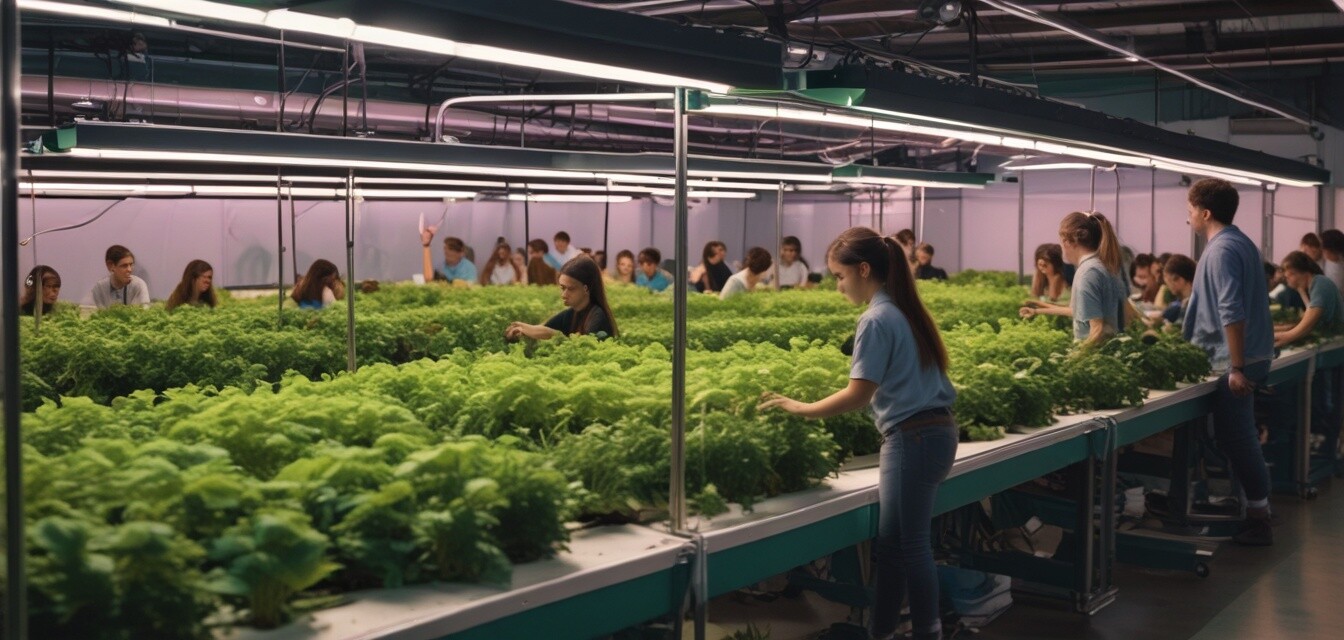
Hydroponics in schools: Educating the next generation
Key Takeaways
- Hydroponics enhances learning in sustainability and biology.
- Hands-on experiences improve student engagement.
- Integration of hydroponics promotes awareness of food systems.
- Schools adopting hydroponic systems see benefits in academic performance.
- This teaching method prepares students for future careers in agriculture and technology.
In recent years, hydroponics has started to take root programs across various schools. This innovative method of gardening, which involves growing plants without soil, presents an exciting opportunity for educational institutes to engage students in practical learning experiences related to biology, sustainability, and food systems. Through this article, we will explore how hydroponics is being integrated into school curricula and its positive impacts on students' learning and awareness of environmental issues.
The rise of hydroponics in education
Schools are increasingly recognizing the potential of hydroponics as a dynamic teaching tool. As urbanization accelerates and traditional agriculture faces challenges, the necessity for innovative solutions in food production has emerged. Hydroponic systems allow students to grow plants year-round, regardless of the climate, making it possible to incorporate food production into various subjects. Key benefits of integrating hydroponics into school programs include:
- Engagement: Hands-on activities capture student interest and enhance learning.
- Practical skill development: Students learn valuable skills that prepare them for future careers.
- STEM education: Hydroponics provides a practical application of science, technology, engineering, and math.
Educational benefits of hydroponic gardening
Incorporating hydroponics into the curriculum promotes multiple areas of learning:
| Subject | Learning Opportunity |
|---|---|
| Biology | Understanding plant growth, photosynthesis, and nutrient cycles. |
| Sustainability | Exploring sustainable practices and understanding resource management. |
| Math | Measuring plant growth, calculating nutrient ratios, and understanding data collection. |
| Technology | Using data and sensors, exploring automation and monitoring in farming. |
Case studies: Hydroponics programs in schools
Numerous schools have successfully implemented hydroponic gardening systems, enriching the educational experience for students:
- Urban High School: A pilot program introduced hydroponics in the biology curriculum, resulting in increased student enthusiasm for science. Test scores improved by 15%.
- Middle School Initiative: This program focuses on sustainability, where students not only grow plants but learn about composting and recycling, reinforcing ecological awareness.
- High-Tech Academy: This institution integrated hydroponics with technology by using sensors to monitor plant health, teaching students about IoT (Internet of Things).
Challenges and considerations
Despite the numerous benefits, schools may encounter challenges when implementing hydroponic systems:
Pros
- Hands-on learning experience.
- Promotes teamwork and collaboration.
- Encourages healthy eating habits and knowledge of food sources.
Cons
- Initial setup costs can be high.
- Requires ongoing maintenance and support.
- Need for trained staff to guide students.
Future of hydroponics in education
As hydroponics continues to gain popularity, it is poised to play a significant role in future educational practices. The method not only addresses the need for sustainable agriculture but also equips students with critical skills for tomorrow's workforce. With more schools exploring hydroponics, we can expect:
- Increased collaboration with agricultural technology companies.
- Expanded curriculums that include advanced growing techniques.
- More resources dedicated to hydroponic research and training.
Get involved!
If you’re excited about the potential of hydroponics in education, consider exploring our other resources or getting involved with local schools. To learn more about hydroponic systems and how they can be applied in educational settings, check out the following helpful articles:
- Hydroponic systems buying guide
- Importance of grow lights in hydroponics
- Choosing the right nutrient solutions
Conclusion
Hydroponics is undeniably transforming educational environments by providing students with practical knowledge and skills that are relevant to today's world. As more schools recognize the importance of sustainability and food education, we can anticipate a significant shift in how future generations engage with agriculture, science, and technology. Embracing hydroponics in classrooms not only encourages hands-on learning but also empowers students to become informed stewards of the environment.

